EZEMVELO: ANALYSIS
Questions re-appear over costs, staffing levels and politics at KZN’s ‘sinking ship’ conservation agency (Part 2)
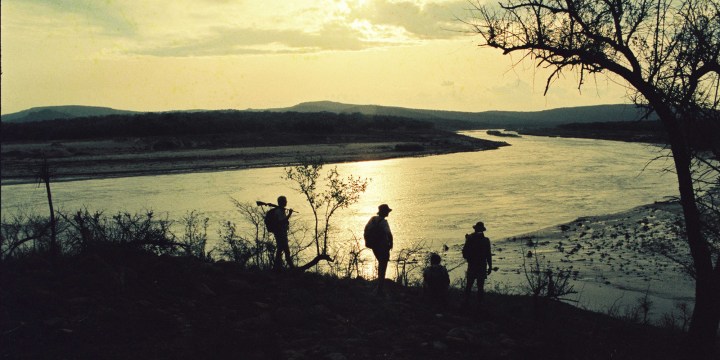
The Ezemvelo KZN Wildlife conservation agency is in the news again for all the wrong reasons after the entire board of directors was suspended last week following ‘prima facie allegations’ of maladministration in the cash-strapped organisation. To restore financial stability, slashing the salaries and allowances of board members and the number of senior executives might be a good place to start.
Read Part One:
KZN’s ‘sinking conservation ship’ hits another storm (Part 1)
Presenting one of his last annual reports before retirement, former Ezemvelo KZN Wildlife chief executive Dr George Hughes remarked with some pride that the board members tasked with corporate oversight all served on a voluntary basis, receiving no allowances for their valuable services.
That was in 1999, shortly after the former Natal Parks Board merged with the former KwaZulu-Natal Department of Nature Conservation to form a new united agency to act as custodian for more than 100 provincial game and nature reserves.
Hughes had set his sights on joining the organisation at the age of 12, but had to wait until he was 21 before his application to become a junior ranger/fisheries officer could be considered. After cutting his teeth as a lowly ranger in the Drakensberg at a salary of R60 per month, he took an absence to study zoology at university and then returned some years later to work his way up the ranks to eventually lead the organisation from the late 1980s.
Shortly after his last input to the Ezemvelo annual report, a new policy was adopted to remunerate board members with set allowances. These board members would be appointed according to a strict set of criteria to ensure representation of several public interest groups such as local communities, farmers, environmental NGOs, trade unions, or a knowledge of business and environmental law.
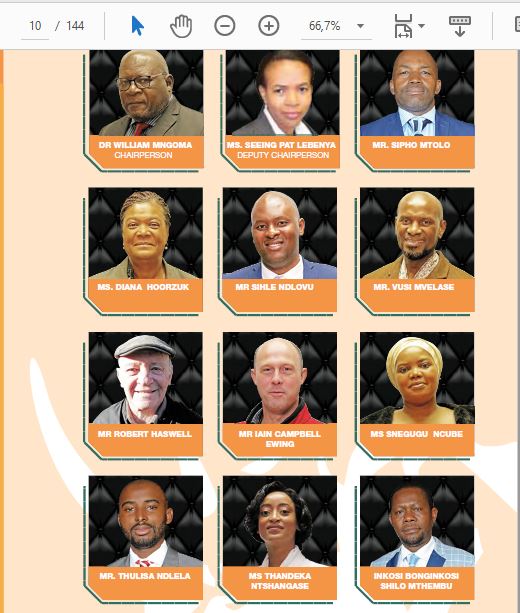
The 12 suspended Ezemvelo board members.
Now, almost two decades later, the entire board has been suspended, once again, pending a fresh forensic investigation into some aspects of Ezemvelo’s increasingly parlous financial affairs and dysfunctional leadership.
While the terms of reference have not been published, it is no secret that Ezemvelo’s financial future is in dire jeopardy because of budget shortfalls, high staffing levels and other problems.
Writing in the latest available annual report (2018/2019) board chairman Dr William Mngoma admitted that Ezemvelo was facing a most challenging time in its history.
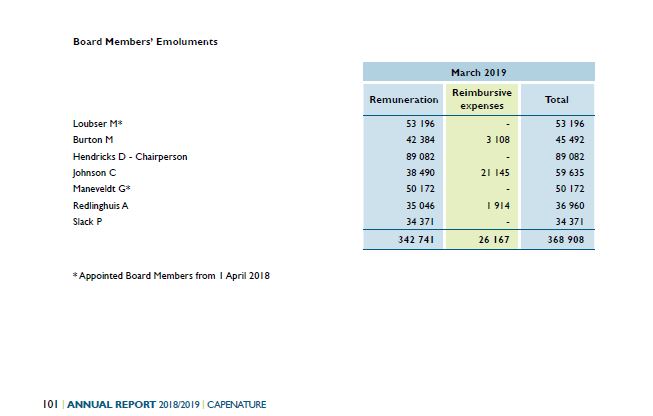
“The entity has experienced crippling budget cuts over the last few years… and will end the year with a R52.4-million recorded deficit. This is of grave concern to the board, as it places the survival of the organisation, in particular the management of protected areas and biodiversity conservation, at serious risk,” he said, before Covid-19 crippled matters further.
Ezemvelo manages several provincial parks or World Heritage Sites that would qualify for national park status, but for political reasons dating back to the National Party era, former Natal provincial politicians and conservationists resisted attempts by the old SA National Parks Board to take over parks such as Hluhluwe-iMfolozi and St Lucia (two of the world’s oldest game reserves, declared in 1895).

But the more recent problems threatening Ezemvelo’s survival are not new, and analysis by Daily Maverick suggests that it fares very poorly on several counts when compared to three other South African conservation agencies, based on information in their latest annual (2018-2019) reports.
For example, Ezemvelo appears to have one of the largest and most highly-paid boards in comparison to South African National Parks (SANParks), Cape Nature or the Eastern Cape Parks and Tourism Agency (ECPTA).
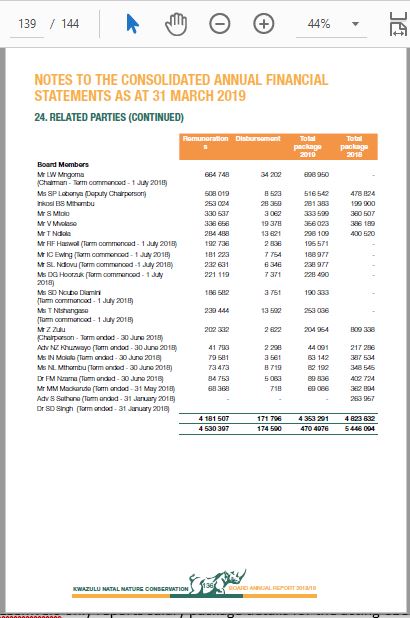
In comparing these four agencies, it should be noted that SANParks is considerably larger as it controls 19 national parks covering four million hectares, while ECPTA and Cape Nature are somewhat smaller.
Ezemvelo manages roughly 80 parks of varying sizes covering large areas of KZN and is also partly responsible for the management of two World Heritage Sites – the 358,534 hectare iSimangaliso Wetland Park and the 260,000ha uKhahlamba-Drakensberg Park.
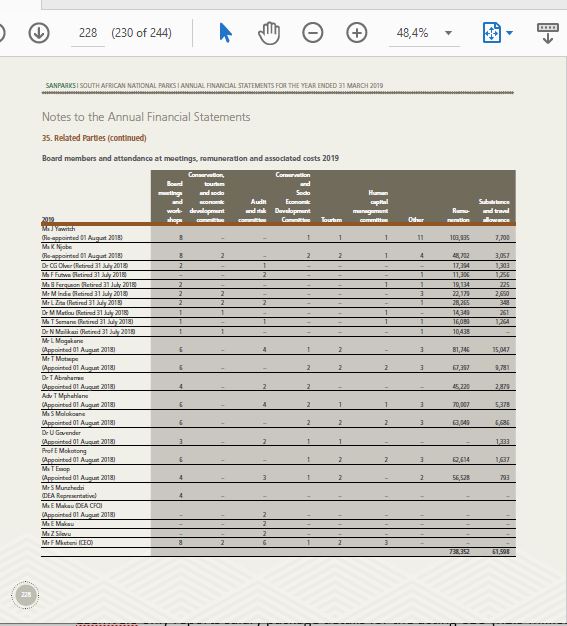 ECPTA currently manages 579,089 hectares, including one World Heritage Site (at Baviaanskloof), and 171,666 hectares of marine space, while Cape Nature manages just under one million hectares of conservation areas in the Western Cape.
ECPTA currently manages 579,089 hectares, including one World Heritage Site (at Baviaanskloof), and 171,666 hectares of marine space, while Cape Nature manages just under one million hectares of conservation areas in the Western Cape.
Nevertheless, the much higher board remuneration costs at Ezemvelo become glaringly apparent considering that annual costs for the 12-member board and independent committee members quadrupled from R1.2-million per year in 2014 to R4.8-million in 2015.
Last year, total board remuneration costs for 12 board members (and eight other members whose terms expired during that year) came to R4.3-million, with extra costs of R351,685 for members of the audit and risk committee.
By comparison, at SANParks (with 11 board members) the total costs for board members who served over this period were just under R800,000. Costs for six ECPTA board members who served that year totalled R892,000 with a further R183,000 for audit committee members. Costs for seven Cape Nature board members were just R368,908 (with a further R34,338 for independent committee members).
Last year Ezemvelo chairman Mngoma was paid R698,950 in total board fees. By comparison, SANParks chair Joanne Yawitch was paid R111,535; ECPTA acting chair Sithembele Mgxaji was paid R108,000 and Cape Nature chair Denver Hendricks was paid R89,082.
On average, other Ezemvelo board members also appear to be paid significantly more than their counterparts in the other three conservation agencies. For example, Ezemvelo board member payments ranged from R190,333 (lowest) to R516,542 (deputy chair) last year.
At Cape Nature, other board members were paid between R34,371 and R53,190 per year. Other ECPTA board members were paid between R81,000 and R231,000 while at SANParks other board members were paid between R10,438 and R81,746.
Comparing executive salaries in the four conservation agencies is more problematic as Ezemvelo only reports salary package details for the acting CEO (R1.9-million) and CFO (R1.6-million). Note that in 2017, the full-time CEO was paid R2.2-million.
CEO annual salaries are listed as R2.7-million at SANParks, R2.5-million at ECPTA and R1.58-million at Cape Nature.
While no breakdown is provided for other senior executive salary ranges in the Ezemvelo annual report, the other three agencies provide a much more detailed breakdown – including the percentage split between top executive costs and other staff. Ezemvelo’s reports do not disclose these details.
For example, at SANParks the salaries for seven top managers comprise 1.6% of the total salary bill, senior management 6.7%, middle management 21%, junior management 18%, semi-skilled 31%, and unskilled 20%.
At the ECPTA, salaries for three top managers make up nearly 6% of personnel costs, with senior managers at 25%, professionally qualified staff 13%, skilled staff 30%, and unskilled staff 13%.
At Cape Nature, salaries for the top four managers made up 2.8% of personnel costs, with senior managers at 12%, professionally qualified 27%, skilled 24%, semi-skilled 21%, and unskilled 12.5%.
Ezemvelo also has considerably more permanent staff (2,247 employees) compared to ECPTA (484 employees) and Cape Nature (991 employees), while SANParks (which controls a vastly larger protected area network, including the Kruger National Park) has 4,181 staff.
While a full analysis was not conducted on this issue, salary costs in relation to total income also appear to be significantly higher at Ezemvelo when compared to the other agencies.
For example, personnel costs accounted for more than 84% of the total conservation management budget in 2015 and last year the figure was also above 80%.
While Ezemvelo personnel costs for 2,247 employees came to around R760-million last year, the SANParks bill for 4,342 staff appears to have been around R940-million in the same period.
Bed unit occupancies for Ezemvelo were reported to be around 43% while SANParks recorded unit occupancies of 72%.
SANParks also generates more than 70% of its own revenue (mostly from tourism), while Ezemvelo only appears to generate about 25% of its own revenue and remains heavily reliant on shrinking government subsidies.
Ezemvelo is no stranger to financial and organisational controversy. In 2007 a previous board was suspended – but successfully challenged in court by board members who were then replaced by a new board and a new CEO, Bandile Mkhize.
But in 2014 a new task team was appointed to investigate further alleged maladministration, including a staff “migration” process in which salaries across the board would be readjusted upwards at a cost of R3.5-million per year.
Some insiders suggest that it is not too late to save Ezemvelo and restore its reputation as a world-class conservation organisation – but only if there is a commitment to clean governance and professional stability and an end to political appointments such as previous board chairman and Zuma loyalist Comfort Ngidi.
However, these initial estimated costs rapidly ballooned to somewhere between R41-million and R70-million at a time when Ezemvelo had no budget to absorb the extra costs.
According to the task team report published in October 2014, it emerged during interviews that the new board failed to exercise adequate oversight of the migration process and the CEO allegedly misled the board on significant issues, although the CEO claimed to have been misled by the HR department.
The task team made a finding that the salary adjustment process “unduly benefited management and a handful of other employees” at the expense of the majority of the staff.
“In respect of some members of management there was a vast increase in salary packages, even when according to their own assessment, there was no significant change in the job description before and after migration.”
The task team also made a finding that the restructuring process was not budgeted for and that there was inadequate oversight by board members who had shown an over-reliance on the CEO. It also recommended that the provincial government consider disciplinary action against the CEO and CFO.
As things turned out, the then-CEO, Bandile Mkhize, and Ezemvelo “parted ways amicably” after he allegedly demanded a substantial golden handshake to leave. The then-board chairman, Comfort Ngidi, declined to discuss the terms of Mkhize’s “confidential settlement agreement”.
Thereafter, Dr David Mabunda took over as CEO – but in September 2017, Mabunda also departed amid continued controversy at Ezemvelo.
Since then, Ezemvelo has been floundering without permanent leadership and has been managed by a series of three acting CEOs: Bheki Khoza, Sthabiso Chiliza and now, the thinly-qualified Ntsiki Dlulane.
The organisation’s long-term future appears to be at a turning point following the suspension of the most recently appointed 12-member board – one of whom resigned four months ago citing difficulties in getting satisfactory answers to “grave concerns” he had raised repeatedly at board meetings.
Though several senior staff and board members have expressed reluctance to be quoted because of Ezemvelo’s stringent media policy, morale continues to decline because of recent events and the resignation of several experienced staff such as Oscar Mthimkhulu, the acting head of operations and former park manager of the uKhahlamba Drakensberg Park World Heritage Site; Andrew Muir, the head of legal; Helen Sutter, the board secretary, and Dr Jean Harris, the former head of scientific services. Other notable departures in recent years have included former head of commercial operations Gladman Buthelezi and a string of senior wildlife managers and section rangers such as Lawrence Munro, Craig Read and Jed Bird.
Some insiders suggest that it is not too late to save Ezemvelo and restore its reputation as a world-class conservation organisation – but only if there is a commitment to clean governance and professional stability and an end to political appointments such as previous board chairman and Zuma loyalist Comfort Ngidi.
Otherwise, there are suggestions that SANParks or a private conservation agency be approached to salvage the ship and restore stability before it is too late. DM



















 Become an Insider
Become an Insider